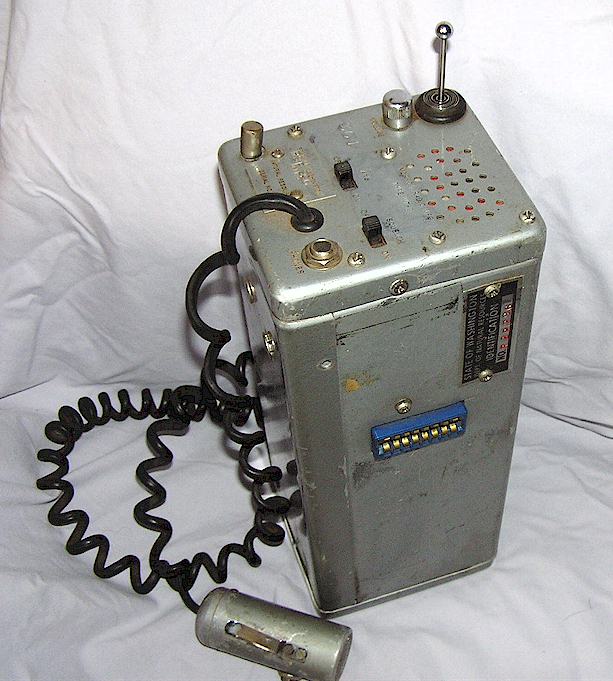
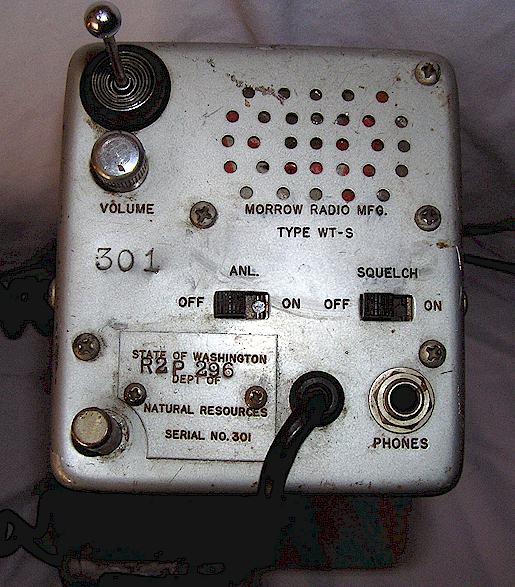
MISC. POSTWAR FORESTRY RADIOS
This page covers assorted forestry radios I have found in my travels that were made during or after World War II in the United States for either the US Forest Service or state agencies prior to the widespread adoption of VHF FM equipment in the early 1950's. Most but not all by this time were VHF sets, operating in the 30-40 MHz band. Note that pre-war sets such as the Type SPF and the SX are covered on separate web pages (see index.)
MORROW RADIO: The Morrow Radio Company was founded by Ray Morrow in Salem, Oregon after the end of the war and initially produced a number of amateur radio mobile products. It is not well known that Morrow also manufactured a number of portable and semi-portable radios intended for the forestry market. Below are a couple of them, one supplied to the Washington Department of Natural Resources and the other to the State of Pennsylvania. All sets are of course entirely vacuum tube based. The examples below probably date from about 1950 give or take a few years. Finding any technical documentation on these seems virtually impossible today, leaving "reverse-engineering" as the only recourse.
TYPE WT-S : This is an interesting small portable unit which operates on a single crystal controlled channel in the 30 MHz range, AM, with built-in telescopic antenna as well as provision for a ground "counterpoise" trailing wire. The purpose of the Amphenol "Blue Ribbon" connector on the side has yet to be determined. There is a compartment for internal batteries in the bottom area. The transmitter power output was probably at or just under one Watt.


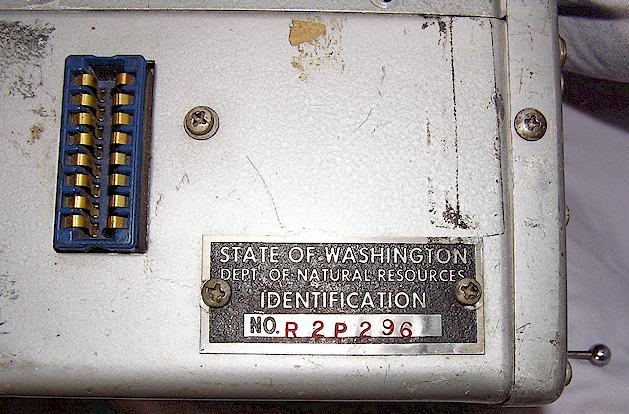
TYPE FLP-2-2H: This is a rather large and robust receiver-transmitter was most likely expected to be left in a forestry lookout tower or a fixed location inside a structure. The case is all rugged aluminum with a front cover and the radio covers two possible channels. This one is tagged as having belonged to the State of Pennsylvania Department of Forest and Waters. Transmitter power output was perhaps a couple of Watts and as with most forestry sets, there is a bottom compartment for dry batteries. This set was originally operated on a 35 MHz channel and based on the stickers placed by the shop that serviced it, must have still been in use into at least the mid or late 1950's, and is presumably the last of the AM equipment. As the photos show, there seems to have been some end-user added cobbling on the original design, such as an extra connector and unmarked control.
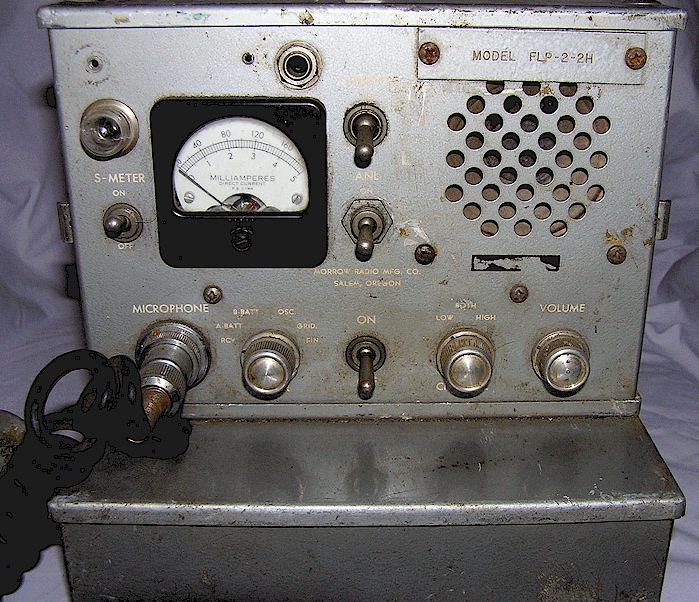
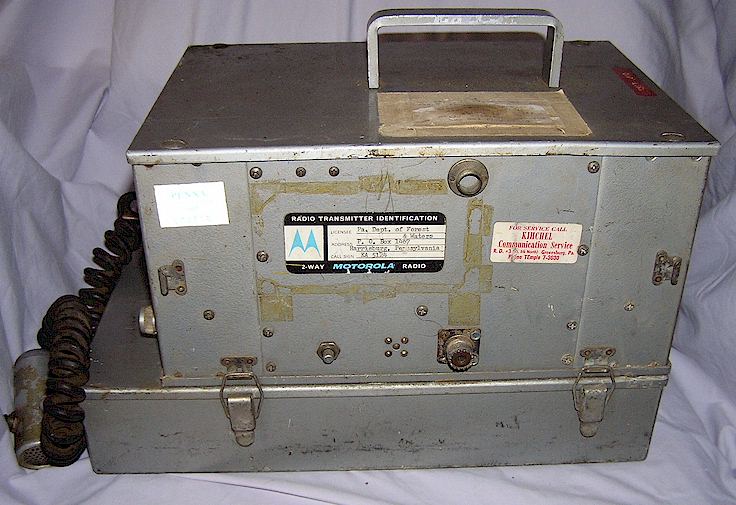
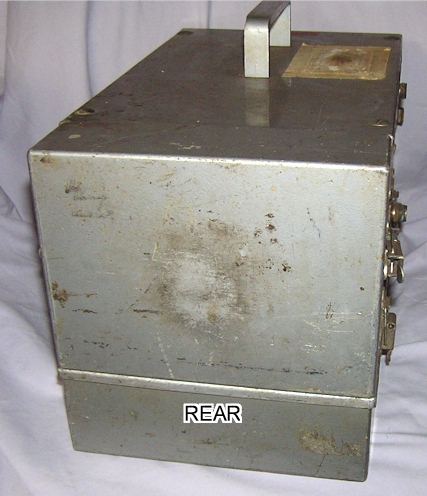
RADIO SPECIALTY MFG. CO.: Radio Specialty was the most famous supplier of forestry radios from the late 1930's through the late 1970's. Further information about the company is on my web pages HERE.
What are shown below are some sets made after the war, usually but not always now VHF. By the 1950's Radio Specialty appears to have followed the switch to VHF FM equipment that most of the the state forestry agencies throughout the country had made by then.
TYPE 1086-1-1 : This is an almost tiny self contained AM receiver-transmitter for the 35 MHz region in an aluminum box. In earlier years this would almost have been considered ideal for spy radio use at short ranges and it looks like a "fun" forestry set for today's collector. It uses all miniature battery tubes and falls into the 1 Watt or under category. It is lightweight and would have been easy to transport, except that oddly, there are no rings or fasteners where one might attach a carrying strap or two. A telescopic antenna with a pre-war "Bendix" coaxial connector was included along with provision to use a length of wire. A Brush Corp. earpiece is permanently attached as the earphone, which also doubles as the microphone on transmit. I have not yet deduced what the small socket on the panel is for, but probably an external earphone-microphone set. Presumably there was originally a canvas carrying case.
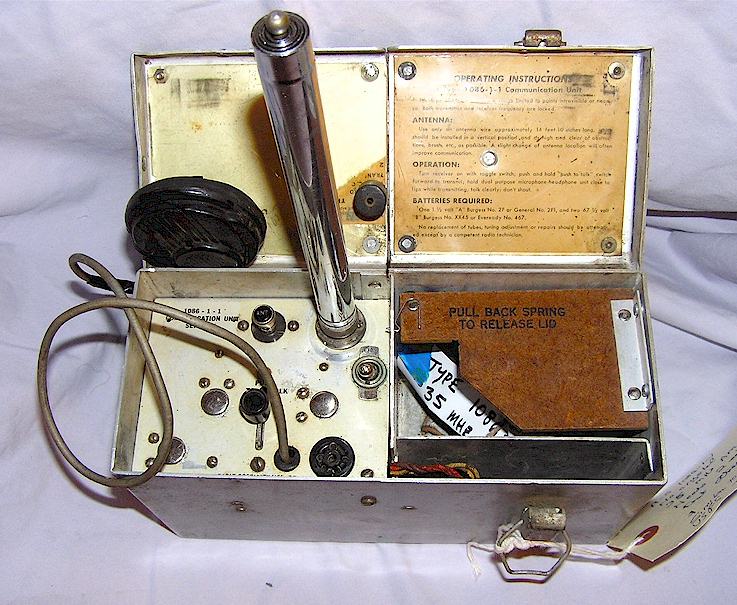
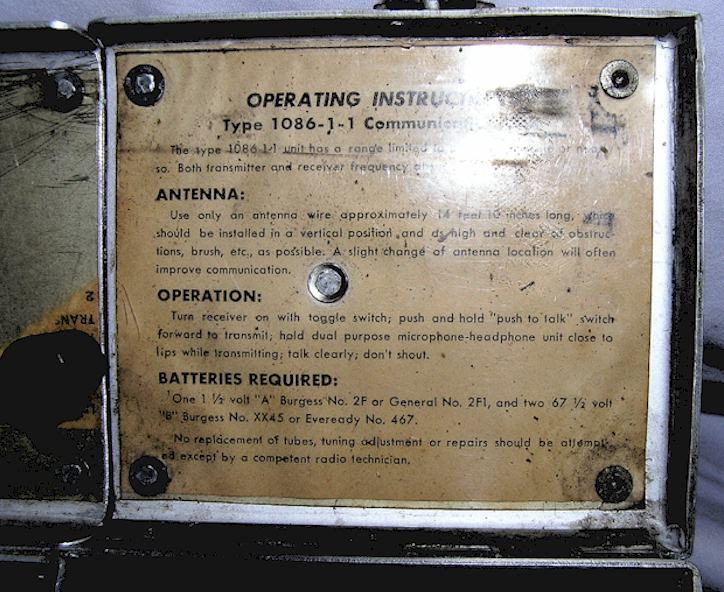
TYPE 1095: This is an all aluminum cased crystal controlled HF radio, AM, made by Radio Specialty, possibly exclusively, operating in the 3 MHz range which has been referred to by original users as the "Postwar SPF" or "The aluminum SPF" or "the 1095 SPF." This particular unit is labeled Model 1095-50-1. See my web page HERE for photos and description of the original US Forest Service Type SPF pre-war radio. This set is all miniature tubes with a built-in dry battery power supply and operates over five receive channels and two transmit channels, all crystal controlled, making it somewhat boring for today's collector, as gone is the original SPF tunable receiver. This makes it more difficult to convert to the amateur 75 Meter band, although a set of crystals used in either the military BC-611 Handie Talkie or BC-745 "Pogo Stick" radio will run this set on 3885 KHz as the IF frequency of the receiver is 455 kHz. This was most likely the last AM forestry portable radio made by this company and is marked only with the Radio Specialty model number and was not given a US Forest service letter name such as "SPF, SX, FX" etc. At least one of these has been placed on the 75 Meter AM amateur "window" by a fellow central California amateur. If you have one of these, be careful not to lash the batteries together as on the original SPF because the wiring arrangement differs between them and the Forest Service master radio manuals warn of dire consequences if you make this mistake.
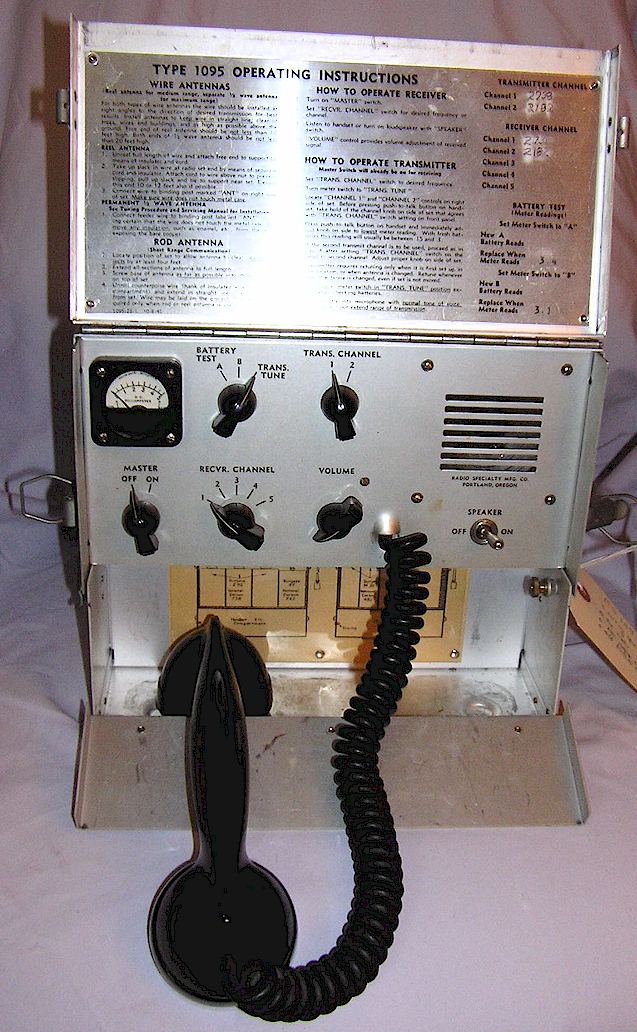
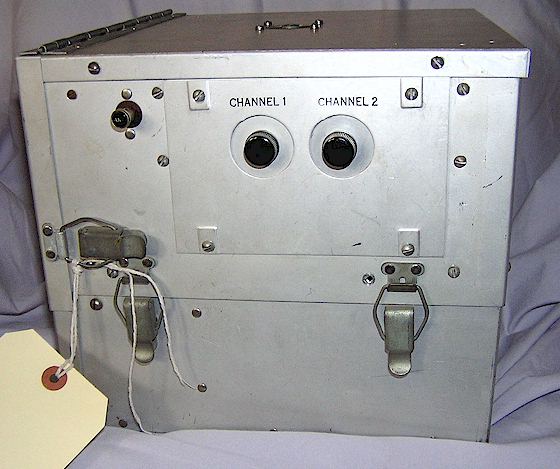
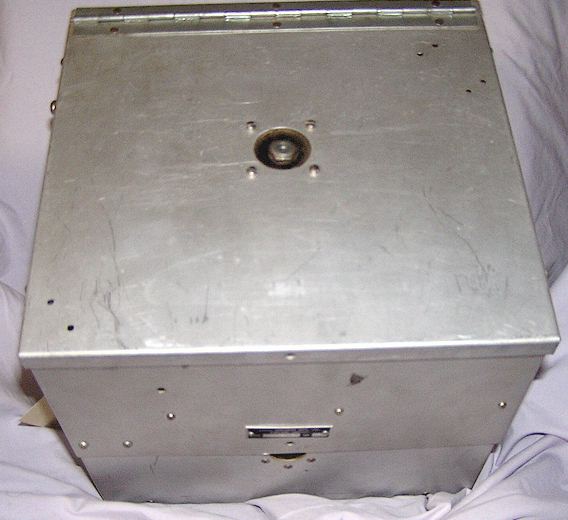
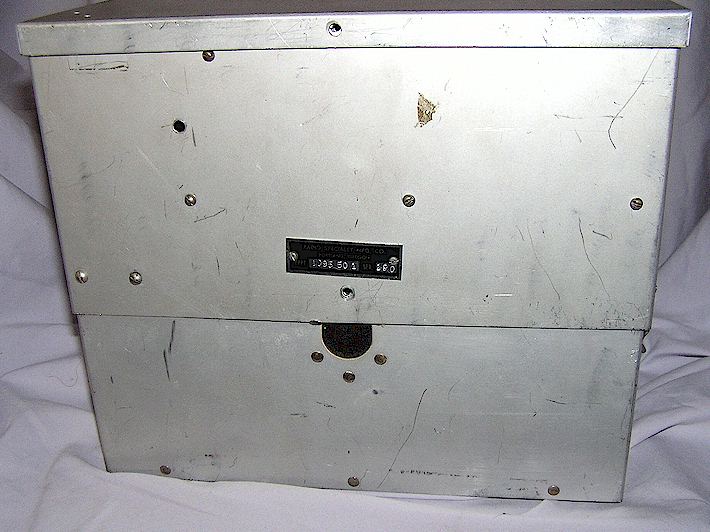
TYPE SF: The Type SF "Handie Talkie" was a USFS laboratory design for a VHF FM (nominally 35 MHz) farmed out to at least two outside manufacturers. This was a late 1940's VHF FM "Handie Talkie" in a stainless steel housing about the same size as the wartime BC-611 "Handie Talkie" made by Galvin (Motorola) during the war and represents the US Forest Service's transition to FM from AM. This radio made use of quite a few war surplus parts, such as the push-to-talk switch and its attendant rubber boot and overlay, earphone and microphone bakelite caps and possibly some other parts from the BC-611, and the screw-in antenna originally found on the BC-620 and BC-654 VHF FM "Jeep" radios. The SF is mentioned in such books as Radio for the Fire Line (available as a free download on the web, see my other pages.)
Manufacturers included Harvey Wells Corp. and Radio Specialty Mfg. Co., the former in Maine and the latter in Portland, Oregon. Those sets made by at least Harvey Wells were not well regarded and considered unreliable. The concept of a stainless steel case was to allow the set to also be used as a reflective signaling mirror. The later "C" models included a huge Cannon MS-series connector below the microphone section for an external headset and microphone for aircraft use, and an external antenna jack, as aircraft of the day would not have had 30-40 MHz FM radio capability. The telescopic antenna stores in clips on the side when not in use, rather than pulling out from inside as with the BC-611 sets. Subminiature wire-lead tubes in sockets are used. The Type SF usually commands high prices when they appear on Internet auction sites, primarily from fan boys and forestry dabblers rather than serious radio collectors, which is unfortunate. The US Forest Service Museum cites these sets as being used from 1947 to 1953, but we can presume that an exact ending date is less abrupt, although this may have to do with the apparent dislike of this set among users.
Shown below are the B-2 (left) and C (right) models.
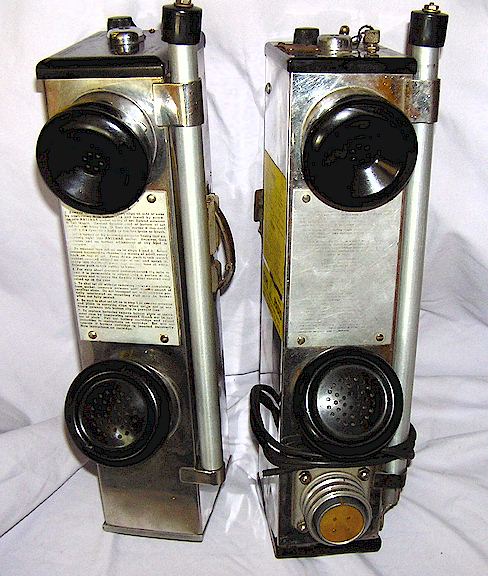
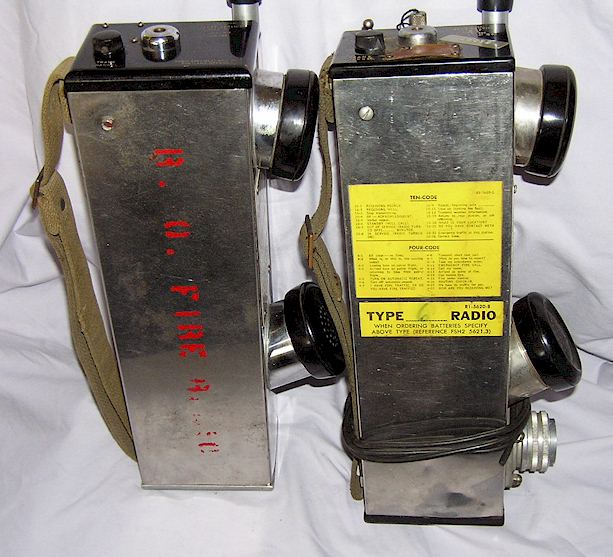
The top panels are shown below. Note that the Type B-2 does not have the lower Cannon connector nor does it have the separate on-off switch (that function was accomplished by screwing in the antenna mast) or an external antenna connector.
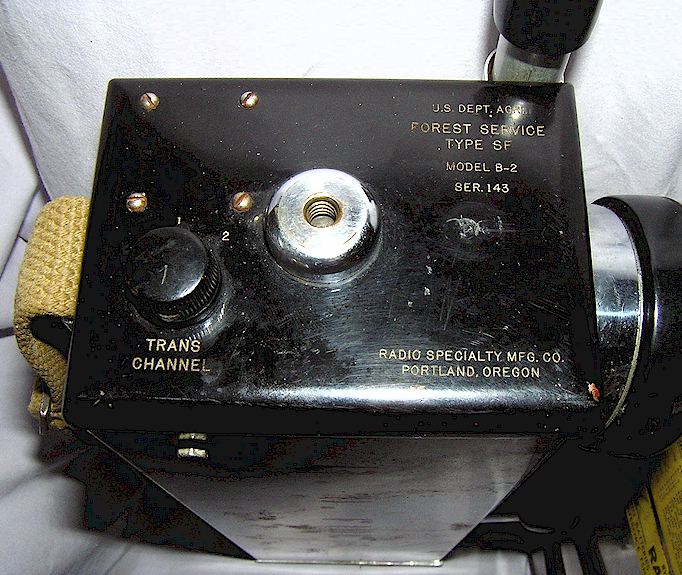
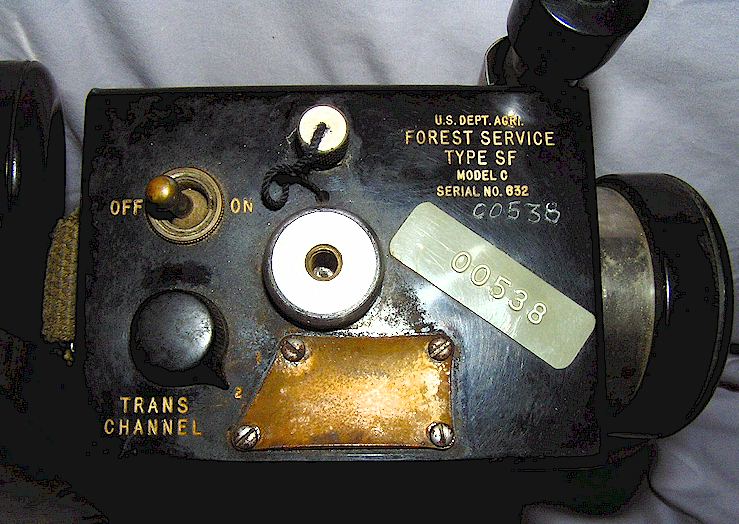
Type SF in the movies
Here is a Type SF (probably a B model) being used as a movie prop in 1961 in the film The Choppers, available on YouTube. The story line was that a gang of criminal teens in hot rods were committing robberies and using two-way radios to coordinate the effort. Note that the antenna isn't screwed in but just extended from its holder. The girl doesn't look too pleased about any of this either, This Type SF has been covered with strips of dark tape, possibly to cut down on reflection or to hide the origin. These must have been on the surplus market by then, perhaps in the Los Angeles area in the mid-1950's to late 1960's. The SF is also shown extensively in the 1950's smoke jumper film Red Sky Over Montana, communicating with a smoke jumper aircraft.
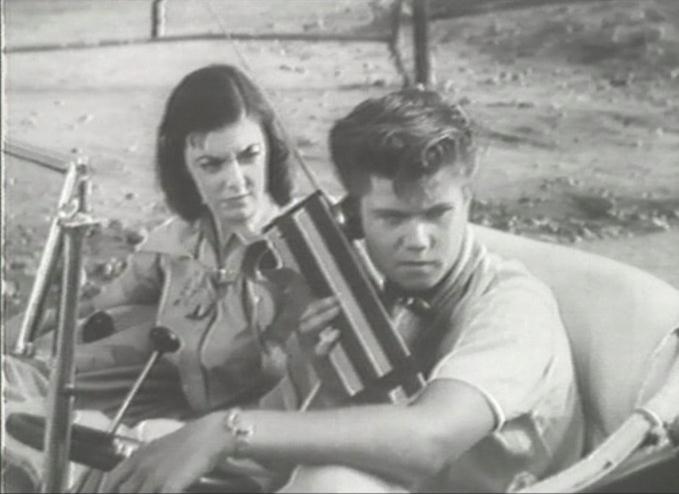
Another appearance by the SF on TV is in Episode 31, Season 01 of Hogan's Heroes, entitled The Flame Grows Higher, where Sergeant Schultz uses a Model B Series to talk to Colonel Klink. Just as in the photo above, the antenna in use in the film is just pulled out a small ways from its holder and not actually screwed into the socket on top.
OREGON FORESTRY SHOP TYPE FX: Probably built in wartime, the FX shown below was manufactured by the State of Oregon's own forestry division rather than an outside manufacturer. It follows the traditional prewar design pattern of a thin plywood cabinet with woven fabric handle and a battery area in the bottom. It has a regenerative receiver that tunes between 30-40 MHz and a crystal controlled transmitter, both AM only. Parts used are over-the-counter types and differences between FX sets seem to indicate that whatever parts could be sourced at a given time were used, hence my thought that this was designed and built in wartime. Interestingly, it appears that at some time in the late 40's or early 50's a couple of the GT style Octal tubes were replaced in the field with a modification to more modern miniature types, as shown in the photo below. What is odd is that the socket used to do this looks like the original octal version except with a miniature 7 pin type placed in the center. This strange socket does not seem to appear in Cinch or Amphenol catalogs of the era, possibly because it was the trend to simply replace octal tube based equipment with newer examples rather than attempt to convert it to miniature tube operation. Interesting is that it uses the same power socket as the US Forest Service prewar Type SPF sets.
The Type FX would seem ideal to convert to 10 Meter Amateur operation because of the variable receiver tuning, although some padding of tuned circuits would possibly be necessary and any schematics or technical data have probably evaporated into the sands of time. It is unknown how many, if any other models of radio were built by Oregon's Forestry Division radio shops.
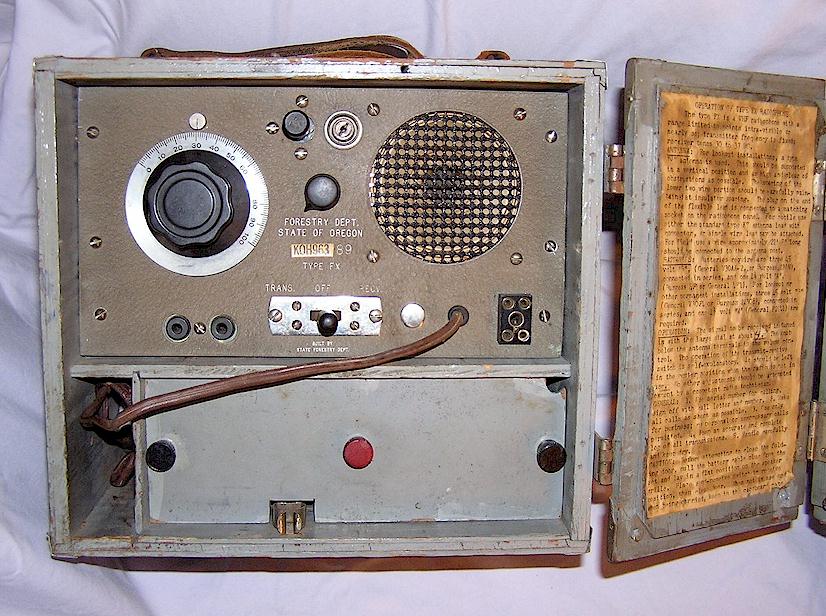
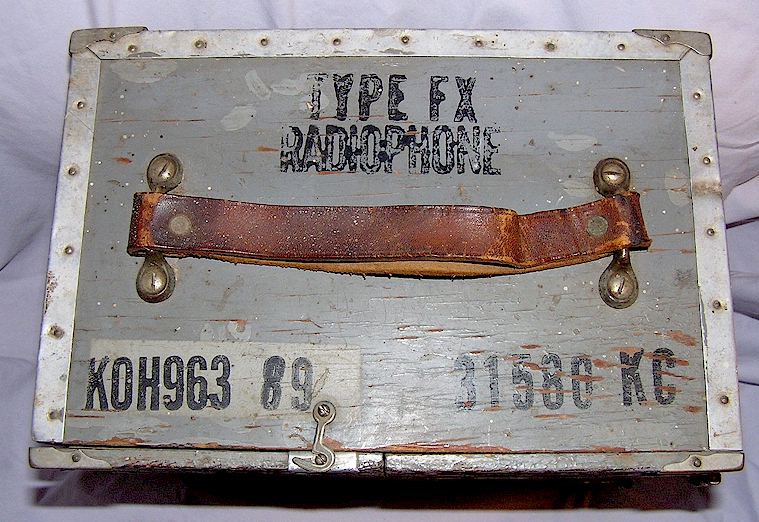
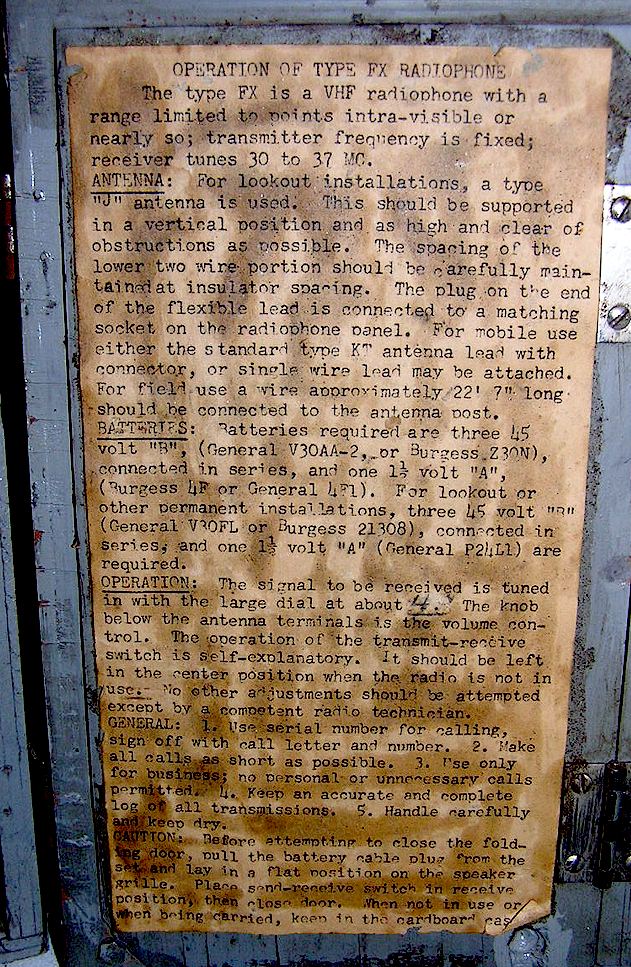
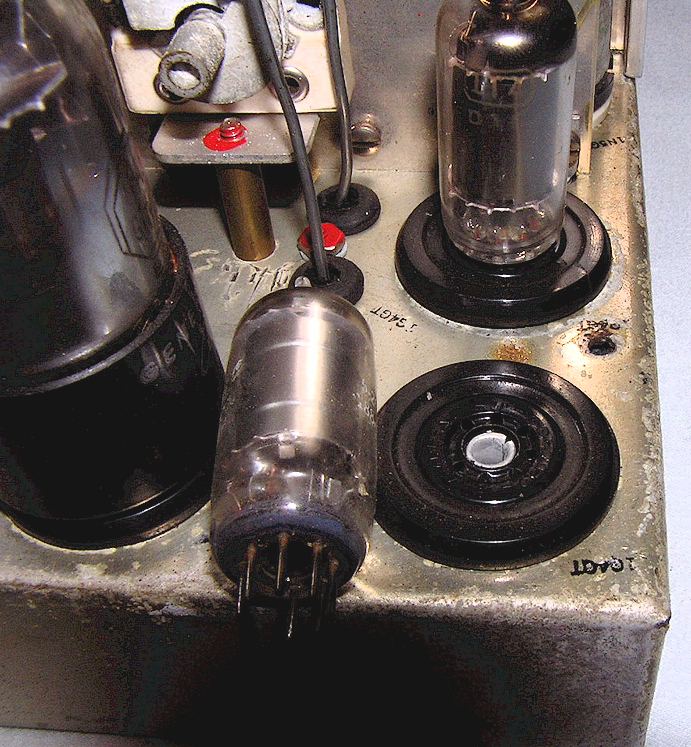
MYSTERY HF PORTABLE: This set has no maker's name on it that I have been able to find. That leaves out Morrow and Radio Specialty, which always engraved their name on equipment somewhere. If you recognize this radio, please tell me! The marking of the parts suggests this was made in the USA in the mid or late 1950's. It has an interesting self contained telescopic antenna rod that doubles as a handle when replaced, and a loading coil that stows inside the handset area. This is crystal controlled on a single 5 MHz channel. If the receiver were tunable it would be an ideal candidate for 75 Meter use! This was very possibly not a forestry radio at all, it may have been made for some entirely unrelated government agency or commercial user. It is still tuned on 5422.5 kHz.
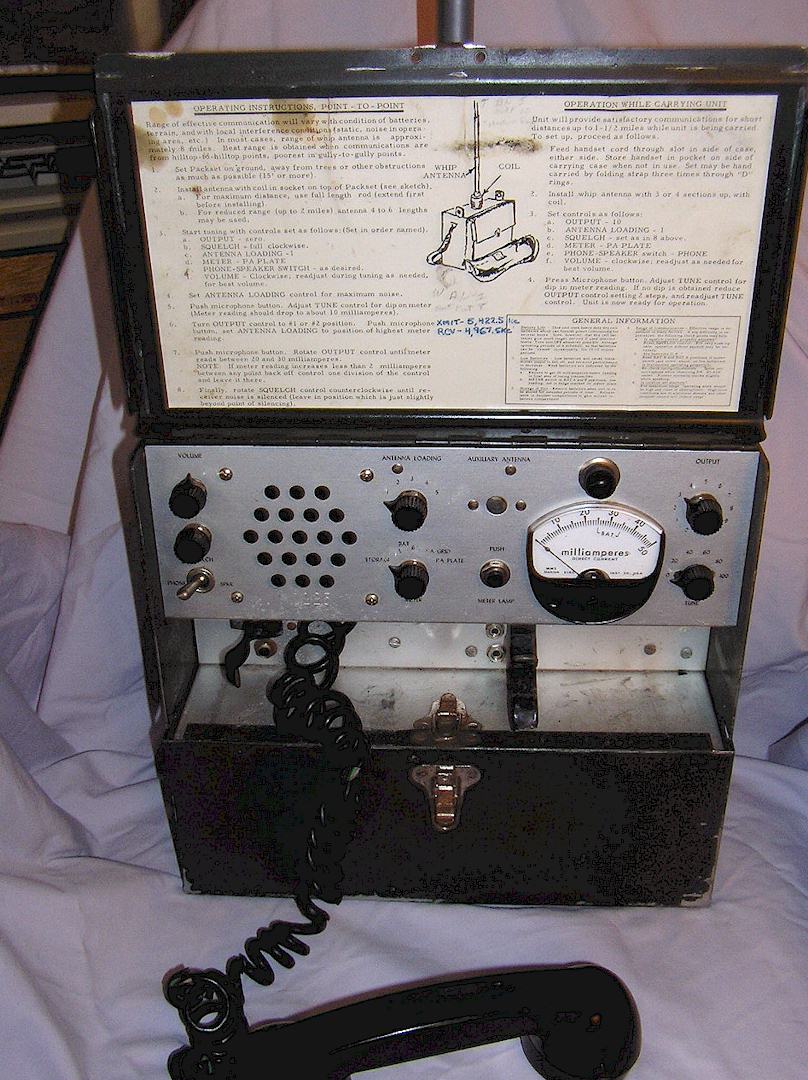
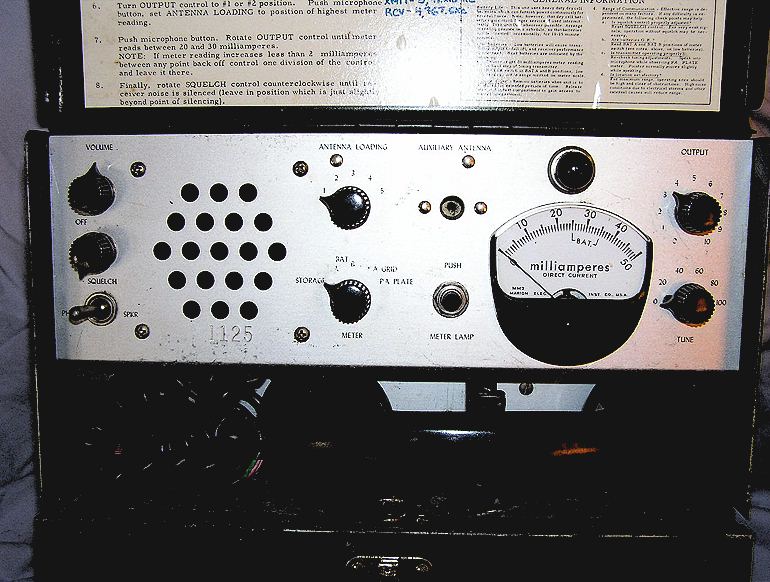
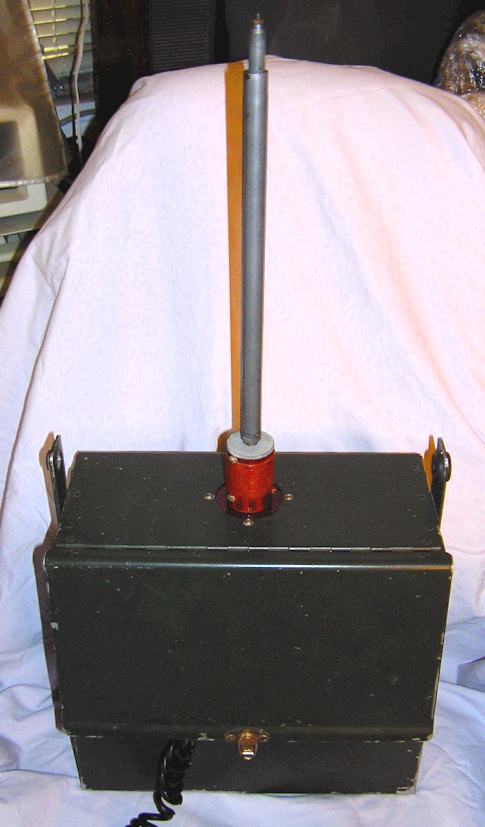
Ver. 2/14/2024 Copyright 2023, Geoffrey C Fors All rights reserved